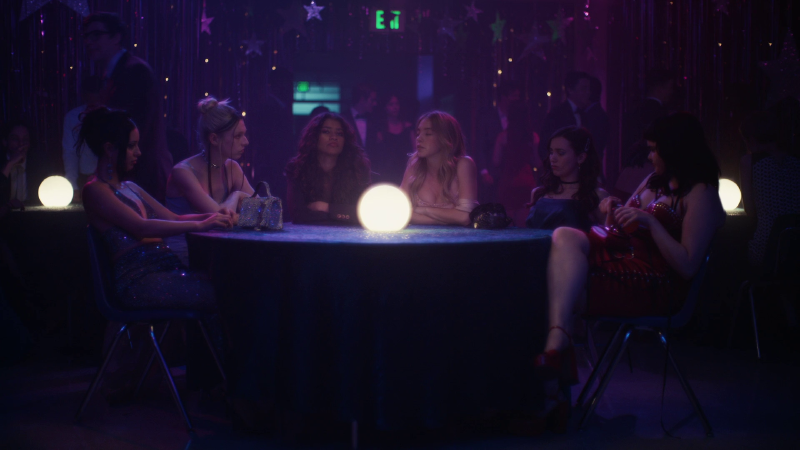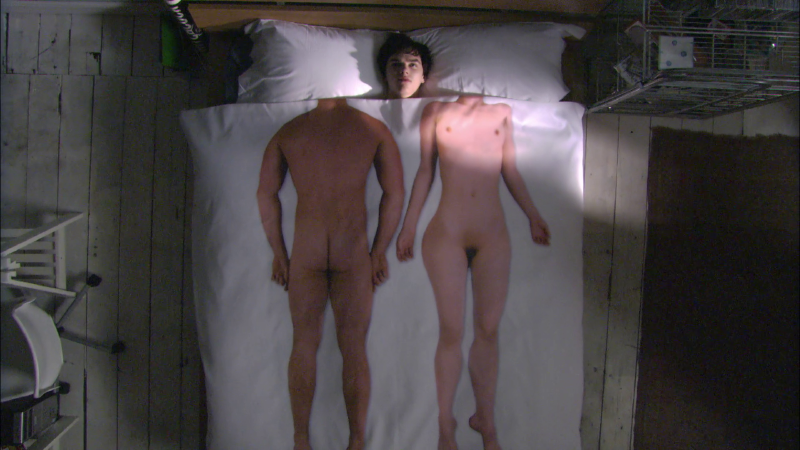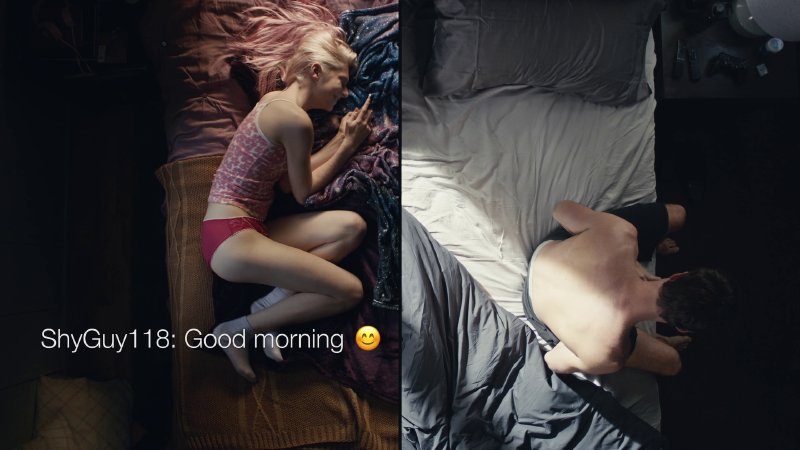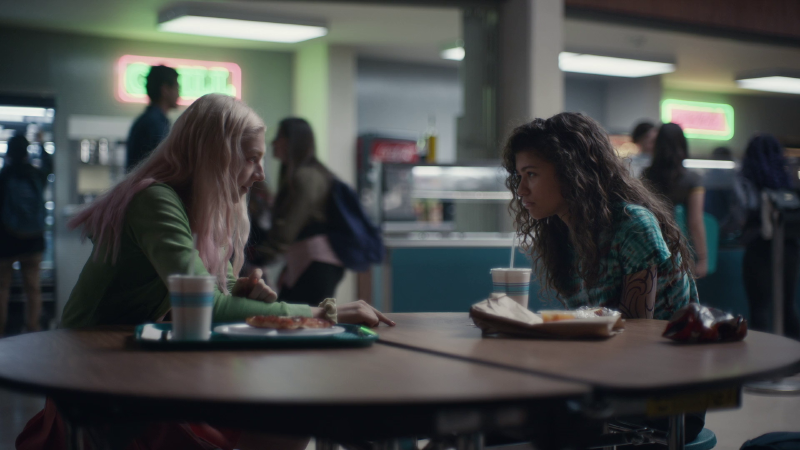HBO's 'Euphoria' is the new 'Skins' - and why it's not
HBO’s new TV show Euphoria, which first aired this summer, is often compared to the 2007 British show Skins. Is this a fair comparison? This post contains spoilers form the first season of Euphoria and the first two seasons of Skins.

First, I want to look at the different themes that the two shows are about. Answering this question on the surface level is easy. Both shows feature a group of teenagers, their social interactions with each other, their families and school. As a major part of adolescence, the exploration of ones identity is prevalent in characters form both Skins and Euphoria. They are finding one’s place in society and wrestle between fitting in and expressing personal tendencies while discovering their sexuality, sexual preferences and the effect of drugs like alcohol, cannabis and MDMA. These broad overarching themes are somewhat archetypes for the teen drama genre, though I argue that both shows discussed here play with the characteristics of this genre in a way that either takes it to the extreme (like in Euphoria) or allows for interesting character and group developments (like in Skins). Both shows differ quite vastly when looking closely at how they tell stories, which stories they tell as well as what form and framework the show tell their stories in.
Looking at the narrative structure, the first big difference between Euphoria and Skins can be made out. Euphoria mainly focuses on the main character Rue and most of the stories are told from her perspective. While there are scenes were Rue is neither present nor aware that these actions happen, the driving story arch in Euphoria is Rue’s story from her point of view. The show’s pilot starts with a few minute long montage of a major part of Rue’s early life, narrated by her, which is about her relation to drugs and her addiction that brought her to rehab. In the montage, a long time span is compressed into a short period of screen time where the selection of moments from Rue’s life does leave out major important story beats, as flashbacks in later episodes reveal. Usually, the first-person point of view gives the viewer only the information that Rue has, but sometimes even important information that Rue should know is temporarily hold back. Paired with the subjective and unreliable nature of Rue’s narration, this leaves the viewer always lacking objective context and background information, an unstable state that evokes a comparison to Rue’s current state of mind that is shaped by mental health and addiction problems. Flashbacks are used numerously over the course of the show. Like in the TV series Lost, which uses flashbacks in a rather formulaic way, views into a character’s past help to give them more depth. While still mostly shown through the lens of Rue’s unreliable narration, a character’s past experiences can be linked directly to traits that seem to motivate actions in the present. An example is seen in Nate’s character. In the first episode, he threatens Jules (a person he just met for the first time) with a kitchen knife while being stressed about the relationship to his ex-girlfriend. This characterizes him as having an abusive personality with no containment for his anger. Later in the series, a flashback shows that he has had a difficult and abusive relationship with his in the closet homosexual and conservative father. While this does not excuse his abusive actions, it adds depth to his character in a way that gives insight into his motivations in the present. But Euphoria often gives these insights after the fact. Actions that seems extreme, erratic and unpredictable at first, polarizing the viewership heavily in their attitude towards a character, are then revealed to be motivated by complex and subtle character traits. An moment that seems very out-of-place and extreme is followed by a big rewarding reveal. There is a sudden appearance of context about the motivation that makes that initial shock-inducing moment somewhat fit into the story arch. The unreliability in Rue’s narration is shown in the narrative structure as well, because Euphoria exhibits a erratic back-and-forth in believability which is achieved by withholding important information about a characters’ past.

Skins is way less erratic in its storytelling. The show follows a group of teenagers in Bristol, UK. Unlike Euphoria, the narrative structure here is more linear. There are no flashbacks, and time is not stretched or compressed in a major way. This constitutes a more matter of fact way of storytelling, where the capabilities of editing in the audiovisual medium are taken aback deliberately to depict the story arcs itself as the main star of the show, almost imitating a documentary style. No events from outside the show’s main time frame are mentioned and all immediate character motivations emerge from within that narrative framework, which plays in a short piece of the characters’ adolescence. Over the course of the show, one cannot make out a single main character. There is no narrator and no character is given a majority of screen time, dividing attention to each of the characters in the circle of friends. Nevertheless, single episodes can be mainly about one character, giving insight to the character’s motivations, traits and place in the social group. The point of view is still not as subjective as in Euphoria. The pilot, which is titled ‘Tony,’ starts with Tony’s morning routine and foreshadows the main event of this episode, a big party at a schoolmate’s house. After the initial scene, focus is shifted on the other characters. The final scene ends with a conversation between Cassie and Sid, setting up the second episode which is mainly about Cassie. Skins is a type of anthology series, where the story shifts to a different set of characters after the second and fourth season. These ‘generations’ are still connected, but only loosely: For example, Effie, an important character in the third and fourth season, is Tony’s sister. This means that the show Skins is less about the characters way through life - Cassie, Sid and Tony or Effie and James - and more about the general ideas of friendship, love and finding one’s path in adolescence.
Most stories told in Euphoria are the over the top and excessive version of real life. Let’s take Nate’s character as an example. Initially, he seems like the stereotypical teen drama high school jock: football player, white, heterosexual, with a cheerleader girlfriend. There are scenes of extreme and unnecessary violent outbursts coming from Nate, his way of coping with inner conflicts about his sexuality. On top of that, at a young age, Nate discovered that his father, a conservative man with high standings in the community, had multiple affairs with men and trans women while being in a relationship with Nate’s mother. These character constellations seem cliche and manufactured for the ultimate conflict of conservative vs. progressive or straight vs. gay, almost like the bizarre and dramatic chain of events from an afternoon soap opera. But Euphoria handles these setups in a surprisingly nuanced way. Nate’s character is deeper than expected at first and there is always room for character development which does not leave the characters to be prototypes of themselves. The common trope of the dichotomy of straight and gay/ queer is broken up and even discussed by main characters: Nate’s girlfriend Maddy and her friends talk about the fluidity of sexuality (‘Sexuality is a spectrum’) in two episodes.

In Mise-en-scène and cinematography, Euporia and Skins differ greatly. Skins takes a reserved approach to depicting what’s before the camera. In a typical TV aesthetic, conversations between the characters are shown very matter-of-fact, there are seldom gimmicks like extreme close-ups or first-person point of view shots. The taken aback-approach highlights dialogue, conversation and interactions of the characters with each other rather than being an main aesthetic device that adds another layer of meaning to the show.
In Euphoria however, the cinematography screams to be noticed. The show follows the recent trend of a television aesthetic that is highly influenced by movies, like seen in HBO’s Game of Thrones, Westworld or Netflix’ Stranger Things. All these shows hav a high production value, contain a lot of special effects and borrow movie cinematography techniques like a shallow depth of field or long tracking shots. When applying these aesthetic elements to television, they play a role themselves and take emphasis away form simple dialogue-to-dialogue series progression. Euphoria takes some of these aesthetic devices and uses them in a way that actually complements the story. In the shot depicting Rue and Jules sitting at a table in their school (cafeteria scene, next picture), the extremely shallow depth of field shows Rue and Jules’ isolation from other people around them and the social context of school as well as their special connection to each other. There are many playful scenes in Euphoria, like the Inception-inspired drug trip scene where Rue walks along the walls and ceiling of a corridor at a house party or a split-screen scene showing Rue and Nate texting (split screen scene, previous picture). Euphoria’s images do not want to be taken literally and they intentionally show a warped version of reality. For example, the mise-en-scène references other genres: Rue’s manic obsession with the relationship between Nate and Jules is shown in a sequence of scenes where Rue is playing a role as a police officer who is trying to solve the case around Nate and Jules relationship, in the style of a 70s cop drama, complete with narrower aspect ratio and film grain. Television is rarely that playful in its form, staging events rather than just simply showing them. The stage-metaphor is emphasized with the ending of the show, which concludes with a musical performance starring Rue.

Although on the surface, Skins and Euphoria fall in the genre of teen drama, they overcome stereotypical tropes from that genre in interesting ways. Both shows are less about single characters but more about general ideas and concepts around adolescence. As the name suggests, Euphoria is about all kinds of emotional states, from emotions induced by drugs, love or sex or the extremes of addiction and emotional dependence. HBO already confirmed that there will be a second season of Euphoria. I hope it will keep up the fresh and new approach to storytelling. It would be intriguing if the show would take an anthology approach like Skins, where the set of characters changes in the new season, but I assume that HBO will continue telling Rue’s story.